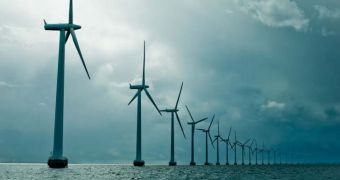This March 19, Energy Minister Fergus Ewing announced that the Scottish government had given the thumbs up to plans to build two offshore wind farms in the outer Moray Firth, an inlet of the North Sea.
Information shared with the public says that, when completed, the two facilities will comprise as many as 326 wind turbines, and their overall power generation capacity will be one of 1,866 megawatts.
Specialists estimate that this output will suffice to meet the power need of over one million households. They also argue that the construction of the wind farms will yield major economic benefits.
This is because the initiative is bound to create thousands of job opportunities during the construction phase, and to support hundreds others once the wind farms become operational.
“These wind farms alone could generate gross value worth up to £2.5 billion (€2.98 billion / $4.15 billion) over their lifetime and generate up to 4,600 jobs during peak construction and up to 580 once in operation,” Energy Minister Fergus Ewing said in a statement.
“Scotland has the potential to lead the development of an exciting, new renewables industry as offshore wind moves into deeper waters.”
“Offshore renewables represent a huge opportunity for Scotland; an opportunity to build up new industries and to deliver on our ambitious renewable energy and carbon reduction targets,” he added, as cited by Click Green.
What Minister Fergus Ewing means is that, once these two new offshore wind farms become operational in Scottish waters, the country will move closer to have 50% of its gross electricity needs met by green sources alone by the year 2015, as is its goal.
The two facilities will sit fairly close to one another in the waters off the Caithness coast. It is said that, together, Moray Offshore Renewables Limited and Beatrice Offshore Windfarm Limited will form the world's third largest offshore wind farm.
Before construction can actually begin, the facilities' developers will have to carry out a series of assessments and determine both how the project will impact on natural ecosystems in the region, and how to best keep the environmental impact of this initiative at a minimum.
Commenting on Scotland’s plan to build these two new clean energy-generating facilities, Gina Hanrahan with the World Wildlife Fund said that, “Climate change is the biggest threat facing our oceans and seas globally, and is already impacting on Scotland’s marine environment.”
“It’s therefore vital that we find ways to harness the clean energy that marine renewables, such as offshore wind, can provide,” the environmentalist went on to argue.

 14 DAY TRIAL //
14 DAY TRIAL //